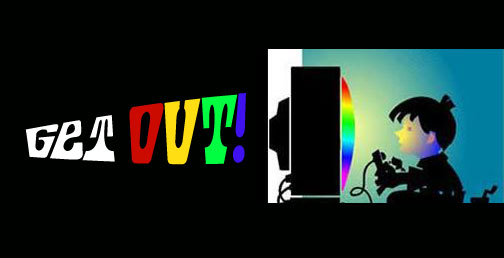By Sanchari Sur
I am a Bengali-speaking Canadian. I am also proud of the fact that I can read the credits of a Bengali movie without having to refer to the English subtitles. This ability to read Bengali makes me feel superior to my Bengali peers in Toronto who are unable to read or write the language like I can. It’s not their fault, of course, that they moved out of India before they had a chance to learn the language in the intensive way I did. But I enjoy my smug smile when they seem clueless while staring at Bengali letters.
How important is the preservation of second language among second and third generations? Being a first generation immigrant, I have no fear for myself, but it does bother me not to know whether my kids will ever read their language. Will Bengali just become a collection of gibberish words they will gradually forget as they move on with their assimilated lives in North America?
Meena Chopra has some of the answers to my unsolved questions. An artist, educator and poet, Chopra has found a way to promote second language education among second and third generation North Americans through her transliterated Hindi poetry. In collaboration with poets Suman Ghai and Nasim Syed, Chopra has taken a fearless step in the publishing world by promoting books that may have little or no success in the North American market. As Chopra explains it, her intention behind the publication of Subah Ka Suraj was to promote Hindi among the “second generation from South Asia settled in English speaking countries like USA, Canada, Australia who cannot read but can understand Hindi”. She says, “A lot of people settled outside … are not familiar with the Hindi script”. Through Suman Ghai’s transliteration into the Roman (or, English) script and Nasim Syed’s transliteration into the Urdu script, Chopra was able to realize her ambitious dream.
But why does she think language is important for new generations to learn and hold on to? Chopra is quick with her answer. She strongly believes that language is an important part of one’s cultural identity and must be preserved beyond the communication level. She asserts that “there is attached to … like literature, mythology and so on. It is important that language survives ”. She urges parents to create “exposure” for their children in order to maintain a connection between their cultural and personal identities; a connection that is always in danger of being lost in a land of immigrants. She also insists that the community has a responsibility to maintain and create second language promotion among second and third generation children as a way to bring together the community on a common platform with a unifying factor, that is, language.
In more ways than one, I applaud Chopra (and Ghai and Syed) for their unique method of promoting Hindi through transliterated poetry. By reminding me of the responsibilities of parents and the community in holding onto gradual loss of a language that may or may not be important in this part of the world, Chopra highlights that second language maintenance is a collective effort, similar to holding onto cultural rituals. As Anjali Benawra, a British-born Canadian with an Indian-Kenyan background puts it, she is proud of being a Marwari who can speak her mother tongue. And whom shall we credit in this regard? Her parents, of course!
So it is not enough for me to be a Bengali-speaking Canadian who can also occasionally smirk at her ability to read and write the Bengali script. I have to teach my kids, too. So that they can proudly sing Rabindrasangeet and know what each word means. Or watch Satyajit Ray movies and actually ‘get’ them. So that I can do what Chopra dared to do, without having anyone to blame except myself. Wasn’t there a quote from Spiderman, “With great power comes great responsibility”? As parents (and future parents), we have the power. The rest, I believe, is up to us.


